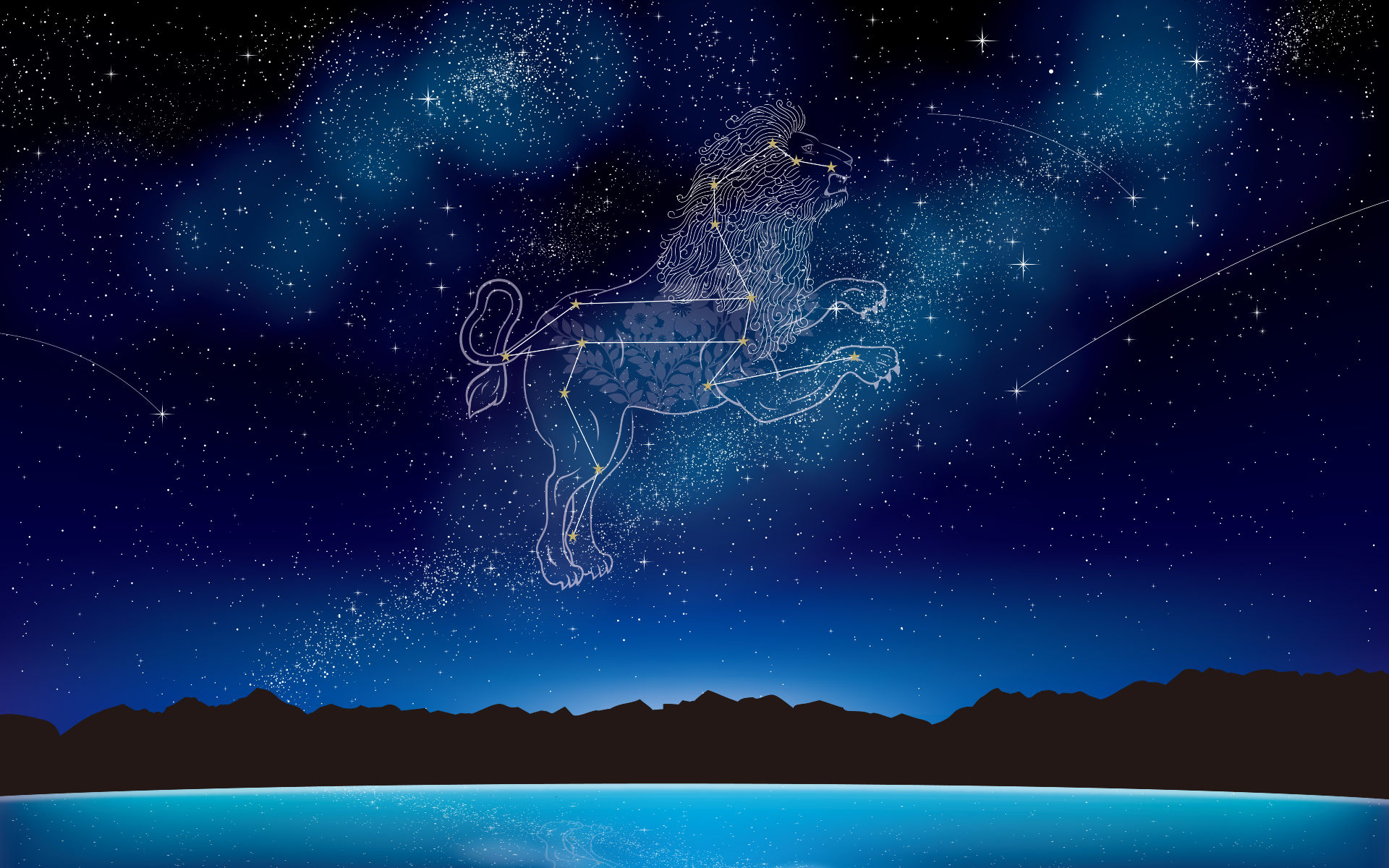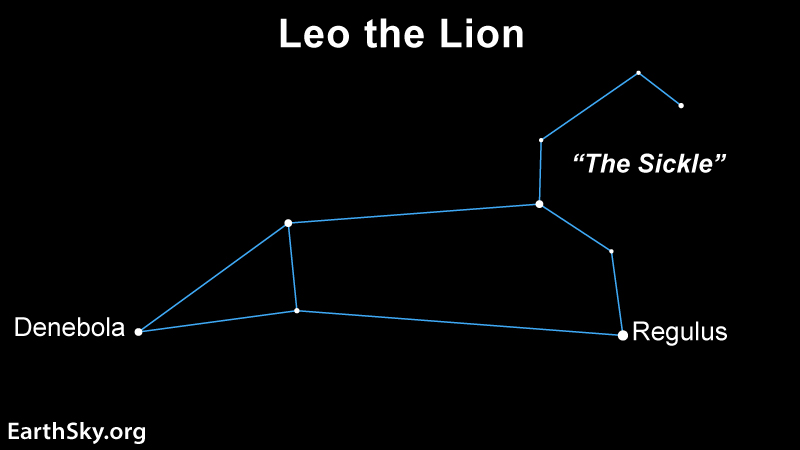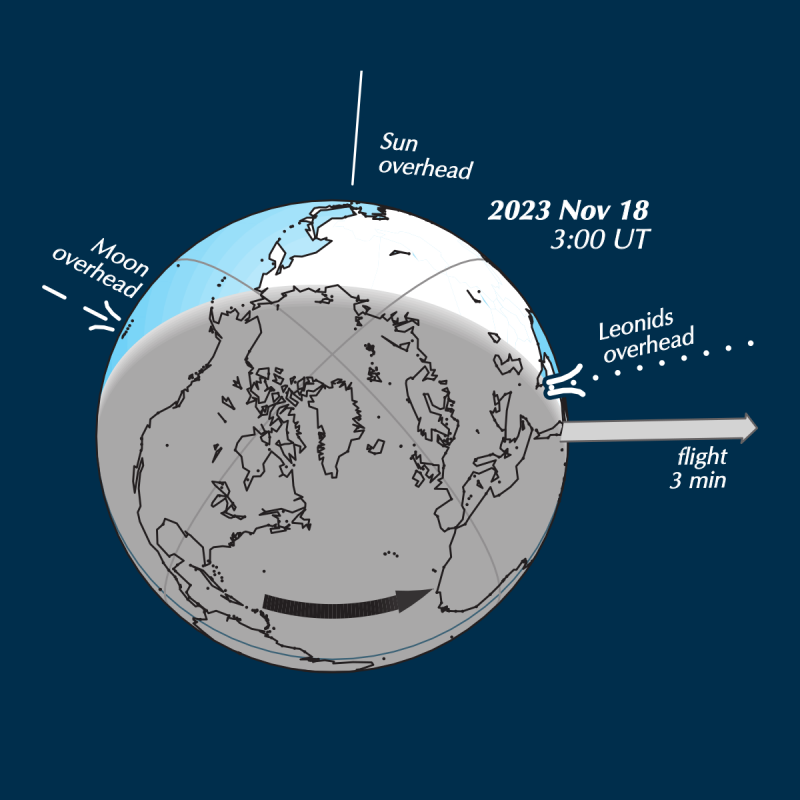Dozens of meteors streak across the sky in this composite image,
captured in the Heilongjiang province of China
credit: Jeff Dai/Stocktrek Images
Are you ready for a fall meteor shower? On November 18th, join us as we witness the magic of the Leonid Meteor Shower at its peak. See a breathtaking display of shooting stars lighting up the night sky. You might also try watching on the morning of November 17. These ultrafast meteors are due to reach their peak on Saturday morning, November 18.
In the modern age, Leo is the home in the sky of a wealth of objects of great scientific interest meaning skywatchers and astronomers today are as fascinated with the lion as were antiquity's astrologers and myth-weavers.
The Leonids, which peak during mid-November each year, are considered to be a major shower though meteor rates are often as low as about 15 meteors per hour. The Leonids are bright meteors and can also be colorful. They are also fast: Leonids travel at speeds of 44 miles (71 kilometers) per second, and they are considered to be some of the fastest meteors.
The Leonids are named after the area of sky from which they seem to originate - the sickle-shaped constellation of Leo (the Lion).
The constellation of Leo is one of the easiest to spot over Earth inspiring both mythology and cutting-edge astronomy.
Leo is part of the twelve constellations that comprise the zodiac with the others being Aries, Taurus, Gemini, Cancer, Virgo, Libra, Scorpius, Sagittarius, Capricornus, Aquarius, and Pisces. It follows the naming convention of these groupings taking its name from an animal.
Every year the Earth passes through these debris trails, which allows the bits to collide with our atmosphere where they disintegrate to create fiery and colorful streaks in the sky.
A meteor storm versus a shower is defined as having at least 1,000 meteors per hour. Viewers in 1966 experienced a spectacular Leonid storm: thousands of meteors per minute fell through Earth's atmosphere during a 15-minute period.
There were so many meteors seen that they appeared to fall like rain. The last Leonid meteor storm took place in 2002.
The Leonids are renowned for producing bright fireballs, which outshine every star and planet. Their long trails are often tinged with blue and green, while their vapour trains may linger in the sky for five minutes or more.
Although the incoming particles are small, ranging from specks of dust to the size of small pebbles, the Leonids glow brightly because they are the fastest of all the meteors.
A typical Leonid meteor, arriving at a speed of 71 km s-1, will start to glow at an altitude of about 155 km and leave a long trail before it is extinguished.
Education:
Learn the fascinating science behind this phenomenon, as these meteoroids originate from Comet Tempel Tuttle, a celestial traveler on a 33-year orbit around the Sun.
Expect 10-15 meteors per hour at peak during this year’s shower. Grab your telescope, find a spot away from city lights, and immerse yourself in the wonders of the cosmos
- When to watch: Watch late on the night of November 17 until dawn on November 18. The morning of November 17 might be worthwhile, too.
credit: Image via Guy Ottewell. Used with permission.
via EarthSky
In 2023, first quarter moon falls on November 20. So there will very little interference from moonlight in 2023.
The Leonids are best viewed starting at about midnight local time. Find an area well away from the city or street lights.
Come prepared for winter temperatures with a sleeping bag, blanket, or lawn chair. Orient yourself with your feet toward the east, lie flat on your back, and look up, taking in as much of the sky as possible. In less than 30 minutes in the dark, your eyes will adapt and you will begin to see meteors.
Be patient – the show will last until dawn, so you have plenty of time to catch a glimpse.
Gina Souto
17.11.2023
Copyright © 2023G-Souto'sBlog, gsouto-digitalteacher.blogspot.com®
Science : Wow ! The magic Leonids meteor shower ! Let's prepare for a fall meteor shower ! by G-Souto is licensed under a Creative Commons Attribution-NonCommercial-NoDerivatives 4.0 International License.
references: The Museum of Science/ ESA/ EarthSky





No comments:
Post a Comment